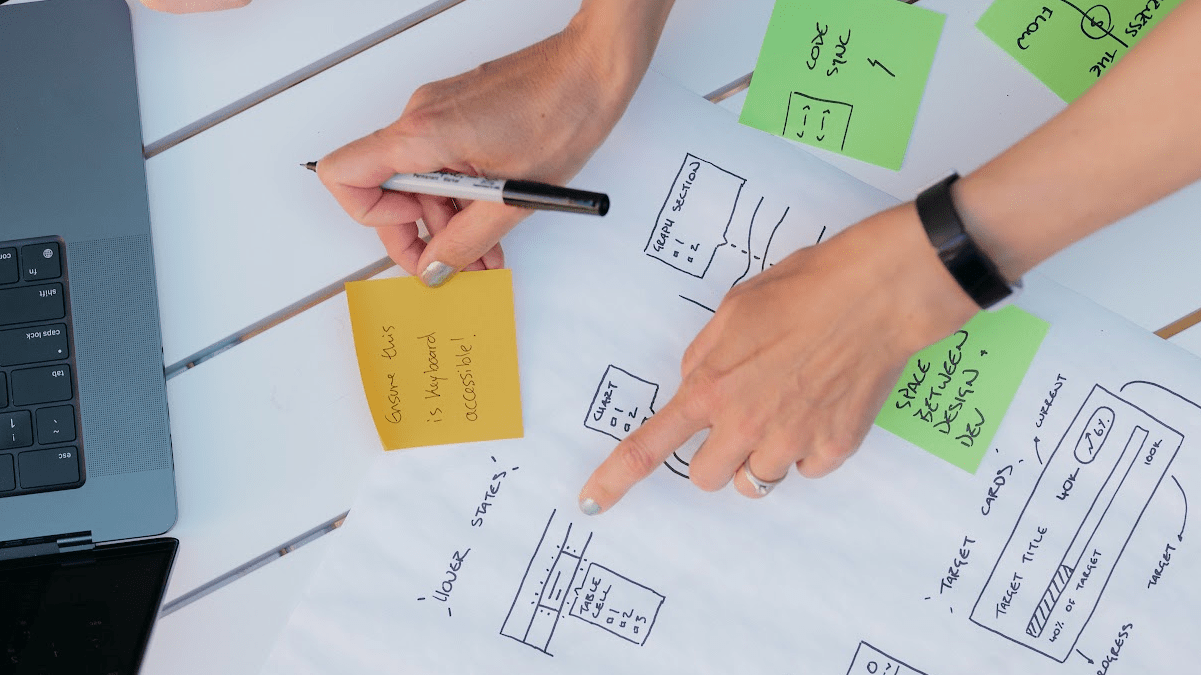Too many websites are failing people when it comes to delivering a truly accessible experience for all.
In many website builds, accessibility is an afterthought. It is approached as a bolt on, or left out entirely to reduce budgets, manage resources, or because there has been a lack of investment in the right skills and team members.
The Internet deserves better.
Here at Airteam, we are focused on creating a better experience. If you want to come along on this journey with us, check out our top tips for creating a more accessible internet below.
Accessibility doesn’t have to be difficult or expensive
There is a myth out there that design accessibility is difficult and expensive. The truth is, this is only a problem when accessibility is considered too late in development.
As a project progresses, fixing escalating accessibility problems becomes cost prohibitive. You plunge deeper and deeper into code debt and this retroactive approach to accessibility costs the business dearly.
But, by taking accessibility considerations in from the beginning and weaving it into the design and build from the outset, not only does accessibility become very affordable, but it brings about a whole host of knock-on benefits.
1. Embrace the benefits to brand, business, and beyond
Creating more accessible websites for all is the right thing to do. Why focus on creating a limited experience for some when you can create a better experience for all?
But, for anyone who thinks the feel-good factor alone is not enough to go the extra mile, consider this: accessibility is good for business.
Many of us identify as having a disability. In fact, on average, people currently spend 11% of their lifespan living with a disability. And according to Forbes, people with disabilities in the United States alone, hold about $544 billion of annual disposable income.
Being an accessibility-conscious business can also bring with it brand benefits. It gives your website and brand greater exposure, improves perceptions across a wider audience and, as the The Web Accessibility Initiative (WAI) points out, "Accessible design considerations often lead to improvements in general customer experience and loyalty".
Authentically aligning with a global, online community of vocal people who support and praise brands who strive to do the right thing is not only right for business, it is what is right for everyone.
2. Remember accessibility is not all about disability
One of the most important, and often misunderstood aspects of design accessibility is - it’s not just about catering for people with permanent disabilities.
There are also temporary disabilities, like broken bones or blurred vision, which can leave people longing for more accessible websites. Then there are also conditional or situational disabilities, such as those living in remote areas with poor internet connections. There are also those everyday, temporary impairments such as dealing with a glare of the sun on a screen or holding a child in one arm that can also impact how we engage with websites.
Think of accessibility as a ramp. Ramps work for everyone, and there are points in time when everyone wants to use one. Widening your understanding of who benefits from design accessibility helps showcase how important this is to everyone online.

3. Bake accessibility in from the beginning
It’s important to understand and embrace the fact that accessible websites are better websites.
Tight timelines and budgets might lead to a desire to get a website live as soon as possible, but that is where avoidable oversights creep in.
Sites built with accessibility at their core tend to benefit from improved SEO, better usability, a higher quality codebase that leads to less bugs and faster loading times, and reduced costs over their lifespan.
Following a few key principles can ensure you are taking accessibility into consideration from the get go. A few of the core principles we follow include:
- Research is paramount. Discover the needs of your target audience before you set about designing solutions, and understand the common types of accessibility requirements that fit most use cases.
- Cross-check your designs early and continuously to make sure they comply with your required accessibility targets. We generally follow WCAG AA as a standard at Airteam.
- Anything you can do with a mouse, you should be able to do with a keyboard.
- Test your design’s effectiveness and improve as you go: don’t assume you have ticked the box once the website is live.
- Don’t stop learning - accessibility is a constantly changing space, with continual improvements and additions being made to industry guidelines.
4. Invest in the future of accessibility
You do not have to know every single thing about accessibility. What is important is the commitment we share to continually learn and improve what we do in the discipline.
This means taking responsibility to develop not only our learning, but also invest in teaching up-and-coming talent, clients, and the wider UX community about the importance of accessibility.
We strongly believe that by teaching someone to prioritise accessibility early on in their career, they will carry that with them as they rise up the ranks, influencing colleagues and clients as they go.
And finally, and perhaps most crucially, is the need to really care about accessibility so that it never becomes an afterthought.
While there are legal requirements and minimum standards for accessibility set out by the Australian Government, if you approach accessibility as a box-ticking exercise it will lead to a substandard experience, as well as a whole load of dev issues down the track.
Instead, approaching accessibility with the mindset of wanting to create the best user experience possible based on the available budget, time, and skills will yield the best result for you and your users.
The simple act of caring about how those with mental, physical, environmental, and temporary challenges experience the website you launch into the world is guaranteed to make the internet a better place.
Interested in working with a company that prioritises users' experience? Get in touch via our contact form.
























